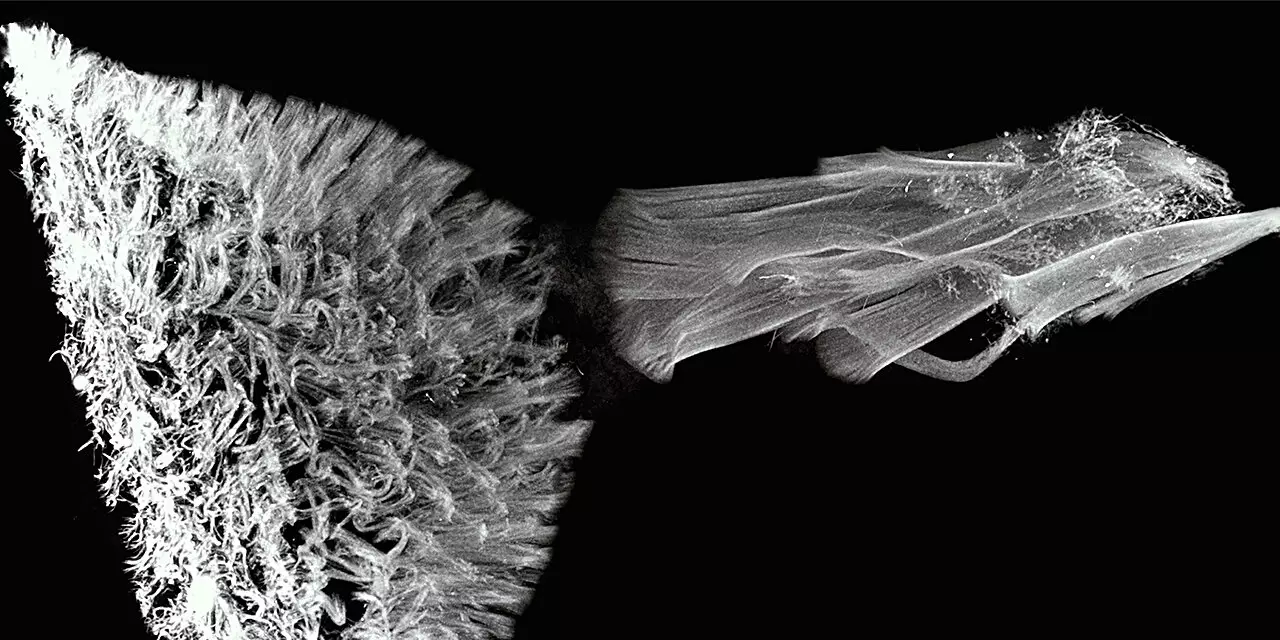Science thrives on revolution, with each new discovery reshaping our understanding of the world around us. It’s a dance of ideas where established norms encounter new perspectives, forcing scientists to question and often rewrite the rules. In this context, the Kanso Bioinspired Motion Lab at the USC Viterbi School of Engineering stands out as a beacon of innovation. Their remarkable work, freshly published in *Nature Physics*, exemplifies the essence of scientific inquiry, challenging entrenched beliefs about the mechanisms of fluid pumping in ciliated organs.
Fluid Mechanics in Living Systems
The intricate interplay of biology and physics has fascinated scientists for centuries, yet the details behind specific mechanisms often elude comprehension. The latest paper by Professor Eva Kanso and her team introduces an ingenious exploration of two distinct fluid-pumping strategies observed in living organisms: the “flame” model and the “carpet” model. These structures are not merely different but represent foundational approaches to how various organisms manage vital fluid dynamics across their bodies.
The “carpet” model, prevalent in humans, allows ciliated tissues within our airways, brain, and reproductive system to manage fluid flow with exceptional efficiency. This arrangement resembles a dense array of short cilia working in concert to facilitate transportation and filtration. Conversely, the “flame” model seen in many simpler organisms features longer cilia that vibrate in a coordinated longitudinal motion, designed for different fluidic demands. This morphological dichotomy has been historically interpreted through a lens of evolutionary lineage, which Kanso’s research contests.
Reframing Evolutionary Narratives
At the heart of Kanso’s findings lies a simple yet profound assertion: the physical requirements of fluid dynamics dictate morphological evolution. This pivoting perspective marks a watershed moment in our understanding of biological architectures. Instead of viewing these two ciliary forms as products of divergent evolutionary paths, the Kanso Lab proposes that they emerge from a continuum governed by mechanical constraints that dictate design. Instead of “carpets” and “flames” existing in isolated evolutionary bubbles, they are variations along a spectrum dictated by function—form truly follows function.
The implications of this revelation extend far beyond academic curiosity. By identifying universal design rules for ciliary pumps, the authors illustrate a continuum of morphological features, indicating that certain structural parameters, such as lumen diameter and cilia-to-lumen ratio, can unite the biomechanical designs of diverse organisms under a shared evolutionary framework. This idea holds the potential to reshape both theoretical and applied sciences as we reassess the designs of natural systems through the prism of their functional needs.
Clinical Viability and Broader Impacts
One of the standout implications from this groundbreaking study is its potential application in understanding and treating diseases linked to ciliary dysfunction. Conditions like bronchiectasis, hydrocephalus, and ectopic pregnancies—notably linked with malfunctioning cilia—could see novel therapeutic strategies emerge from this research. With a clearer understanding of how ciliary structures can be optimized for enhanced fluid flow, medical professionals might devise more effective interventions to restore function in affected organs.
Moreover, the insights gained from studying ciliary flames in simpler organisms may unlock vital clues regarding human kidney disease. By investigating how these mechanisms operate under the fluid dynamics proposed by Kanso’s findings, researchers can innovate new diagnostic and treatment options tailored to human physiology.
A New Paradigm Shifting Science Forward
Kanso’s work does not merely fill gaps in existing knowledge; it transforms the framework through which we view ciliated organs and their diverse morphologies. Measuring ciliary beat patterns and fluid flow in complex biological systems has historically been a daunting challenge, a barrier that has stifled progress in the field. By successfully bridging experimental research with sophisticated mathematical modelling, Kanso Lab leads not just with innovative methodologies but with a paradigm shift, pushing the boundaries of established science into new territories.
Rather than a rigid classification of forms reliant on evolutionary narratives, their findings advocate for a fluid conceptualization that emphasizes function over lineage, pushing for a more interconnected understanding in biology and bioengineering. In doing so, the Kanso Bioinspired Motion Lab exemplifies the spirit of inquiry that defines contemporary science, inviting us to look at nature not as a set of isolated phenomena but as a mosaic of interrelated functions and forms.

